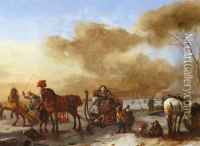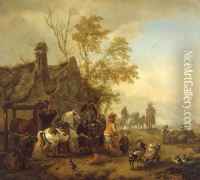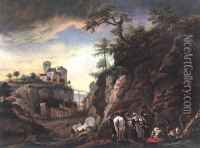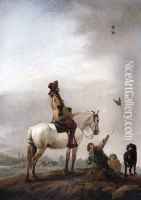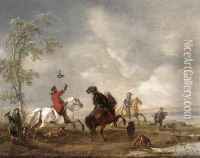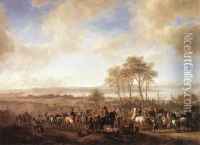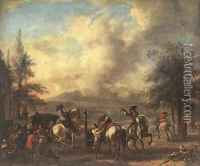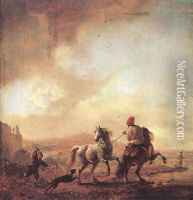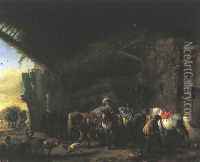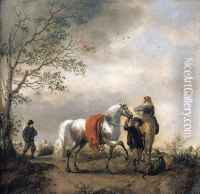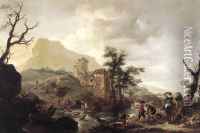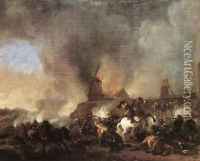Philips Wouwerman Paintings
Philips Wouwerman was a Dutch painter best known for his depictions of cavalry and battle scenes, as well as landscapes and genre scenes. He was born in Haarlem in 1619, into a family with artistic connections; his father Pouwels Joostensz Wouwerman was also a painter. Philips was the eldest of three brothers, all of whom became painters. He was initially taught by his father and later became a pupil of the landscape painter Pieter van Laer, who had a significant influence on Wouwerman's style.
Wouwerman's early works are characterized by scenes of soldiers and horses, showing a remarkable attention to detail in the depiction of animals, particularly horses, which would become a hallmark of his work. His landscapes often included hunting scenes and were notable for their dynamic compositions and skilled use of color. After a period, his style evolved, and he began to incorporate more serene and pastoral themes into his work, such as elegant riding parties and leisure activities of the upper classes.
Throughout his career, Wouwerman was prolific, producing a large number of paintings that were well-received by collectors and art lovers. His works were widely imitated and forged, which is a testament to their popularity during his lifetime and beyond. Despite his success, little is known about Wouwerman's life, and much of what we know comes from his works and the records of the Haarlem Guild of Saint Luke, where he was a member.
Philips Wouwerman died in Haarlem in 1668, leaving behind a significant body of work that has been highly regarded by subsequent generations of art historians and collectors. His paintings are found in many major museums around the world, including the Louvre in Paris, the Hermitage in Saint Petersburg, and the Rijksmuseum in Amsterdam. His influence extended beyond his lifetime, contributing to the development of equine and battle scene painting in European art.

